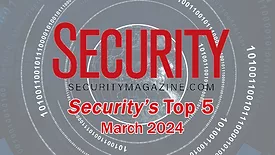Home » Keywords: » security awareness
Items Tagged with 'security awareness'
ARTICLES
Education & Training
Balancing efficiency with security in manufacturing
Whirlpool Corporation Chief Security Officer Erik Antons highlights the unique security issues in the manufacturing industry.
February 8, 2024
Sign-up to receive top management & result-driven techniques in the industry.
Join over 20,000+ industry leaders who receive our premium content.
SIGN UP TODAY!Copyright ©2025. All Rights Reserved BNP Media.
Design, CMS, Hosting & Web Development :: ePublishing







.webp?height=168&t=1717431590&width=275)




